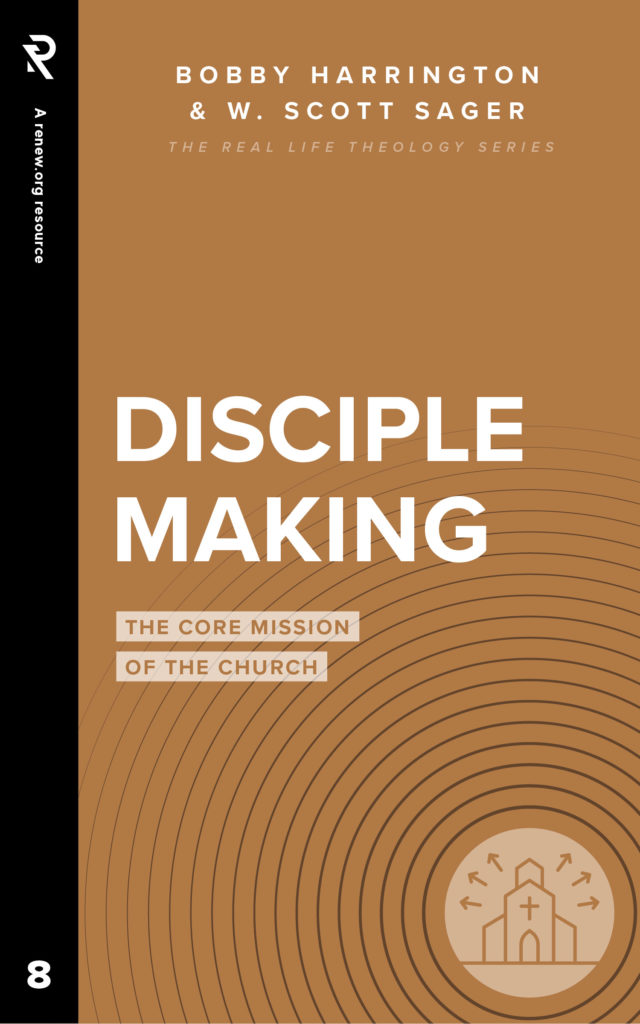
Structuring Churches for a Better Kind of Growth
A while back a friend of mine, a pastor of a growing church, asked me for some advice about what next hires he should make in order to help his church keep growing. His church had about 450 people attending regularly, and he wanted to know a good hiring strategy for growth.
I was a bit surprised at the answer I gave him. I said, “Do you want my pre-pandemic or post-pandemic answer?”
The pre-pandemic answer was pretty easy to give here. There are principles around size dynamics that you need to consider as the church grows. You can look at metrics such as having one full-time equivalent for every 100 people in the congregation. You can look at what percentage your payroll is of your total budget and staff up to 50%. You can invest heavily in children and students and try to grow the best ministry for youth in your area. You can expect that one good staff person will connect with about 150 people so the church can grow by 150s as you add good people.
Prior to the pandemic, many of us in ministry tried to grow our churches this way. But in this strategy there were some major weaknesses that the pandemic exposed.
I first started seeing some weaknesses about 2014. A good friend of mine had gotten hold of the volunteer role spreadsheet of one campus of a famous multi-site megachurch. This particular campus had about 2500 people in attendance and about 400 people serving in any given month. It was interesting to see the breakdown of roles and to see how this church was structured. The selling point was basically this: There is a 6-to-1 ratio here. So, for every one person that you get plugged in to serving, they can serve/reach 6 people.
“I first started seeing some weaknesses about 2014.”
To me that sounded wonderful. Think about it. For every 6 people you ask to serve in children’s ministry, you only need 1 to say yes. Five people can tell you no and you just keep looking. In our church at the time, we had about 500 people on a Sunday and about 250 serving, so we needed 1 out of every 2 to serve. So, you have to really coax, beg, guilt people to serve if you are trying to get 50% of them to step up.
But another thought struck me about this as I looked at it. This system is effectively allowing 5 out of 6 people to come to the church and just consume. They don’t have to give at all. (Financial giving has a similar ratio). Five out of six people can just show up and the church basically asks nothing of them. They can enjoy a sermon that might challenge them a bit. Their kids are engaged and entertained. The music is excellent or at least not cringe worthy. It’s a win. And I think pastors were never going to stop doing this unless something drastic happened.
This brings us to 2020. The pandemic happened and everyone went home. Then there were riots. Then there was unbelievable division. Everyone got behind a keyboard and became the worst version of themselves. In many churches, so many people walked away. Some landed at different churches. Some tried to maintain their faith apart from any church. Some left their faith altogether.
In hindsight we could have seen that coming. Our churches were built on a low-risk and low-commitment model (there is an excellent article fleshing this idea out here). So when political concerns or public health challenges or various ideologies popped up in our culture, it was easy to cut back on the very things that ask very little from you. Church was for most people a fairly easy thing to drop.
“When political concerns or public health challenges or various ideologies popped up in our culture, it was easy to cut back on the very things that ask very little from you.”
So here we are post pandemic. I see a few churches trying to kickstart that old model and do the consumer thing again. A few of them are doing really well with it. Many of them positioned themselves as the brave ones during the pandemic who don’t make anyone wear a mask. I can point to several churches around my city that grew by becoming more libertarian about Covid restrictions than other churches. But in my estimation, those churches are outliers and are hardly a model for a healthy way forward. This is because they are just doing the consumer thing again. Covid could have been a great opportunity for a restructure of our churches in order to be more effective at making disciples.
I think it still can be that for us today.
So, what can we do differently going forward? Here are a couple steps I recommend our churches take in order to restructure for serious disciple making:
1. Pay attention to Luke 9:24 and organize our churches around doing that.
In Luke 9:24, Jesus calls us to take up our cross and deny ourselves. That is a high-risk, high-commitment ask. That is the kind of commitment that builds resilience in a disciple. It allows us to weather the loss and death that comes with a pandemic. It allows us to stay rooted and established in love in the midst of a culture that is rooted and established in whatever is hot right now.
We have to be disciple-making churches, not consumer-making churches. We played that game. We got good at it. We built the buildings. We saw the budgets grow. We had the best children’s ministry in town. The music was amazing. The sermons were clever. The graphics and communications team did great work. And people did what we asked them to do. They showed up and swallowed it all.
It was a fun for a while. Some got baptized. Some started loving their spouses better. Some kids said they really enjoyed being a part of it. There were some good things happening. It just didn’t make disciples. Or at least it didn’t make the kind of disciples who can withstand the pressure. Which is the thing we are actually called to do.
“It just didn’t make disciples. Or at least it didn’t make the kind of disciples who can withstand the pressure.”
Let’s re-center our ministries on praying, fasting, denial of self, fear of the Lord, forgiveness, repentance, communion, justice, the fruits of the spirit, the Sermon on the Mount. This is what the church used to do in the world. This is the kind of kingdom stuff we need to do again.
2. Staff your church for a different kind of growth.
There are two numbers in your church right now.
First, there’s the number of people who attend your church. Let’s say that number is 300. That means on any given Sunday you have around 225 people, so the total number who claim connection to your church is about 300.
Second, you have a number of people who are serious about their faith and are living it out. These are the people who read Scripture and pray regularly. These are the people who will give financially without being asked because they know the Lord is calling them to do it. These are the people who are trying to follow the Lord and are comfortable talking about that.
Let’s say this number in your church is 50—50 out of 300. Here’s the shift we need to make: Staff your church so that you grow the 50 people, not the 300. Spend the time, money, and energy around deepening those people—the kids, teens, and adults that want to grow. As a mentor of mine likes to say, “Go with the goers.” Then let the Lord add to your 300 as he sees fit.
“Spend the time, money, and energy around deepening those people—the kids, teens, and adults that want to grow.”
This sounds like an appeal to turn completely inward and ignore outreach and evangelism altogether. I’m not saying that. I’m saying the model in Acts chapter 2 is that the church was devoted to teaching, fellowship, the breaking of bread, and prayer, and when they focused on that, the Lord added to their number daily those who were being saved.
In other words, make disciples and let the Lord worry about the results. That’s the post-pandemic answer.









